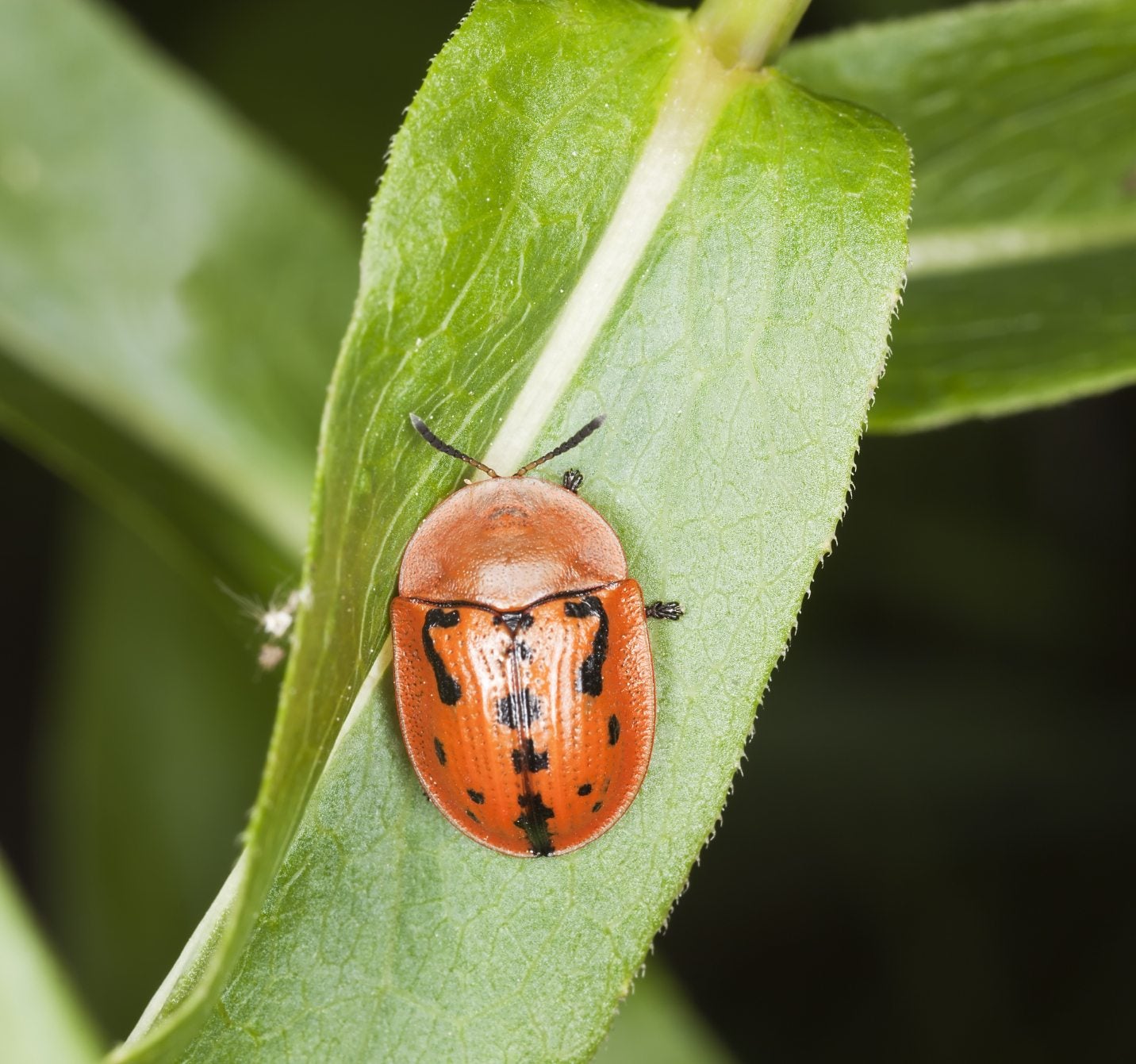Tortoise Beetle Control: Learn How To Get Rid Of Tortoise Beetles


Tortoise beetles are small, oval, turtle-shaped beetles that survive by chewing their way through the foliage of various plants. Fortunately, the pests usually aren’t present in large enough numbers to do serious damage, but they may chew unsightly holes throughout plant leaves. Read on for more information and tips for tortoise beetle control.
Tortoise Beetle Facts
Measuring only about l/4 inch (6 mm.), adult tortoise beetles are odd little bugs with several interesting adaptations that keep them safe from predators. For example, tortoise beetles have hard wing covers that they can clamp down tightly against a leaf surface. The covers also hide the head and legs, which makes the beetles more difficult for predators to grab hold of. Tortoise beetles are often dark in color, but many have a distinctive metallic coloration – usually gold or orange – sometimes with black or red markings. They can actually alter their metallic color to blend in with the leaf surface. The larvae, which are dull brown, green, or yellow with dark heads, have their own unique protective mechanism – they can glue debris, discarded skin, and poo together to form a sort of protective umbrella known as an anal fork.
What Do Tortoise Beetles Eat?
Tortoise beetles feed on various plants, including:
However, some species feast primarily on plants in the sweet potato family. This is generally where tortoise beetles do the most damage.
How to Get Rid of Tortoise Beetles
Seedlings are at higher risk, but most healthy, adult plants aren’t seriously threatened by tortoise beetles. Be sure plants are properly watered and fertilized, and that the planting area is clean and free of weeds. Although the damage is unsightly, it is usually minor. In most cases, control of tortoise beetles is attained by simply removing the pests by hand. Avoid pesticides, if possible, because chemicals can kill ladybugs, parasitic wasps, and many other beneficial insects that keep tortoise beetles and larvae in check. Serious infestations are easily controlled by residual insecticides, such as permethrin. However, chemical control is rarely necessary.
Sign up for the Gardening Know How newsletter today and receive a free copy of our e-book "How to Grow Delicious Tomatoes".

A Credentialed Garden Writer, Mary H. Dyer was with Gardening Know How in the very beginning, publishing articles as early as 2007.